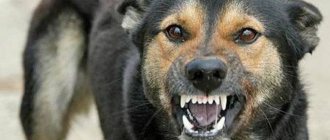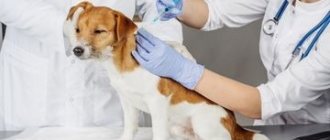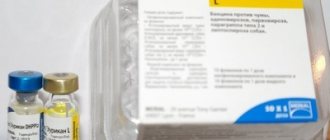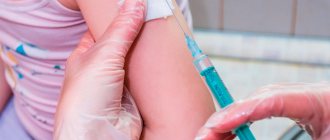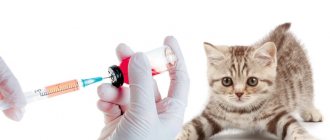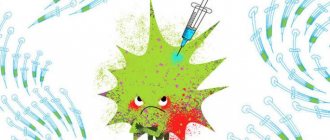Author of the article: Dmitry Boyko | Updated: 08/22/2020
This is not to say that the Pomeranian is too susceptible to various infections and diseases. However, every dog owner needs to take care of more than just regular and balanced feeding. It is very important to vaccinate your animal on time. If vaccinations are of high quality and timely, you will be able to raise a strong and active pet. What does vaccination of Spitz puppies include, and what nuances are recommended for the owner of a dog of this breed to clarify? Let's find out together.
Required vaccinations
It is mandatory to vaccinate your dog. This, of course, is not a 100% guarantee that your pet will not have any diseases. But even if he suddenly becomes infected, the disease will develop without any special complications, and you will quickly cure your dog of the disease. The vaccine will help you protect your four-legged friend from the following diseases:
- plague;
- parvovirus enteritis;
- adenoviral hepatitis;
- rhinotracheitis;
- leptospirosis;
- rabies.
To understand which vaccinations are suitable for Spitz puppies, you first need to understand how dog vaccines are generally classified. First of all, mono- and polyvaccines are distinguished. These two categories got their names because the first is aimed at fighting exclusively one disease, while the second can prevent the development of several ailments at once. But the classification of vaccinations does not end there, since you will need to choose one of the following vaccines:
- killed. They contain dead or neutralized microorganisms. Give your pet this medicine. Even if the animal is quite weakened by this point, the vaccine will still work. The immunity formed is not as strong as after the introduction of a live vaccine, but it is also effective;
- alive. For this vaccination, artificially grown strains of viruses are used, but much weaker ones. Essentially, your pet is given a drug that causes a minor infection, but as a result, your pet develops lasting immunity.
Similar article: How to properly prepare for estrus and mating of Spitz dogs
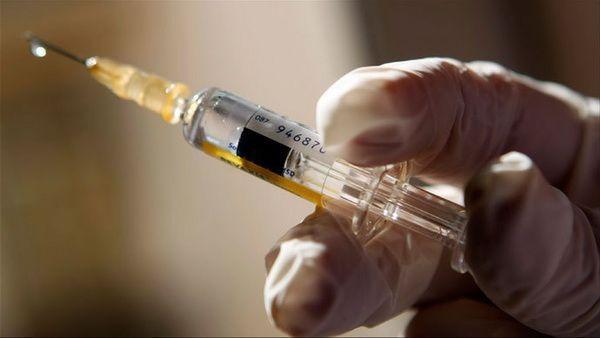
Vaccinations for Spitz puppies must be done, because the task of any dog breeder is to provide their pet with a healthy and active existence.
Types of vaccines
According to the number of viral structures, vaccines are divided into:
- Monovalent: contain only one virus. The use of such a vaccine reduces the load on the puppy’s body, because the immune system is forced to fight only one virus, and not several at once.
- Polyvalent: the vaccine contains from 2 to 9 pathogens. When using them, a more convenient vaccination schedule is created.
- Live vaccines are a live virus, but weakened. Causes mild infection of the body.
- Dead vaccines contain dead viruses. They are more easily tolerated by weakened and sick animals, but do not form as strong an immunity as live vaccines.
In accordance with the state of the causative agent of the disease, they are distinguished:
Vaccination scheme
It is recommended to vaccinate your Spitz no earlier than eight or nine weeks of age. Before this period, the pet “absorbs” maternal immunity, which enters its body through milk. If vaccination is carried out at this time, the dog’s body will actively fight against foreign components, while the development of the dog’s own immunity will be somewhat inhibited.
The first vaccination is given to the puppy when he reaches eight or nine weeks of age. The next stage of vaccination is carried out after 2-3 weeks. This vaccination involves protecting your four-legged friend’s body from plague. Your furry pet will need the third vaccination at 6–7 months. This time is significant for the dog with a complete change of teeth. The dog’s body turns out to be weakened, so vaccination against distemper, hepatitis, enteritis and other diseases is simply necessary.
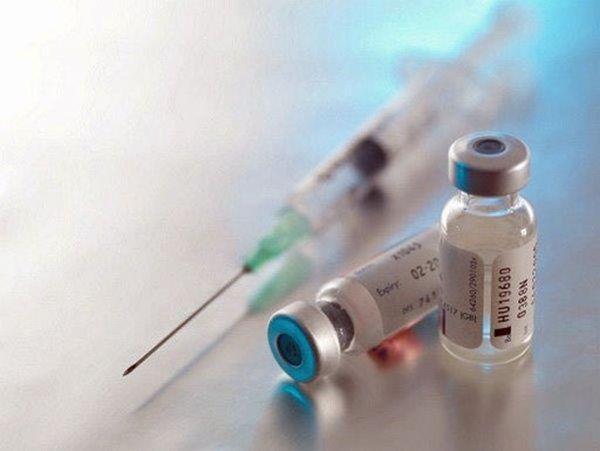
When your Pomeranian puppy turns one year old, he is given a booster vaccination. In fact, the same medications are introduced into his body as he was given for six months. In the future, the vaccination schedule will become much more stable. Your dog will need to be vaccinated once a year. It is recommended to check with your veterinarian at your next scheduled examination to find out exactly what vaccinations your four-legged baby will need.
As for the vaccination schedule, it should be carried out exclusively by a specialist in a veterinary hospital. Until then, try to refrain from walking your pet in the fresh air. When vaccinations are already scheduled and you have about four days left, it's time to start deworming your puppy. To do this, buy special medications, and most importantly, strictly follow the dosage.
Remember: after vaccination, it is not recommended to bathe your puppy for 5-7 days.
Preparation
Vaccination is a very important procedure that plays a fairly significant role in the life of every dog. It is necessary to prepare for the event in advance.
Before carrying out, take the following steps:
- Treat your animal for internal parasites two weeks before vaccination. If a large degree of intestinal infestation is detected in the body, it is necessary to perform deworming twice with a break of 10 days.
- You can carry out the procedure for treating ticks, lice and fleas yourself, strictly following the step-by-step instructions indicated on the product packaging.
- Three to four days before vaccinations, do not subject your dog to physical activity, avoid moving and changing his usual environment. Protect your baby from stressful situations.
- A couple of days before the procedure, carefully examine your Spitz and measure its temperature every day.
- Do not feed your pet directly on the day of vaccination.
- After your dog is vaccinated, follow all your veterinarian's recommendations.
You should not bathe your Spitz for a week after vaccination.
To get the maximum effect from vaccinations and avoid complications, carefully monitor your dog and follow the recommended rules.
At the vet
Pros and cons of vaccination
When caring for a Spitz puppy, timely vaccinations are of great importance. Not all dog breeders take this into account, because there is always a fear that the vaccine will not be of very high quality or even cause harm to the dog. However, the following points will help you make sure that vaccination is still necessary:
Similar article: What is the difference between a Pomeranian and a German Spitz and which is better?

- If you don't vaccinate your dog on time, you will constantly worry about its health. Without proper protection and a strong immune system, even a harmless walk can bring you a lot of trouble. As a result, you will have to spend even more money and effort, and the health of your four-legged friend will be at risk;
- a Spitz, even one suitable in age, will not be able to take part in various exhibitions. A dog breeder will receive a permit for exhibition activities only if his pet is vaccinated;
- Vaccination for a Spitz puppy is mandatory, as it will strengthen his immunity, and any disease in the future will not be so acute.
No matter how you prepare for vaccination, it is advisable to consult your veterinarian in advance. He will tell you which medications your dog needs in the first place, and which vaccinations it is better to do without. An additional examination will not hurt: before vaccination, you must be sure that your pet will calmly endure this type of procedure.
Possible complications
Immediately after vaccination, the Pomeranian Spitz puppy may have a slight rise in body temperature and the area where the injection was given may swell slightly. This is fine. All negative symptoms should disappear within three days after vaccination.
Symptoms that require immediate medical attention:
- diarrhea and vomiting;
- increase in body temperature by more than 1 degree;
- severe swelling and pus at the injection site;
- disorientation and loss of coordination in animals;
- a strong drop in activity;
- refusal of food.
Negative symptoms may indicate an allergic reaction. If any vaccination rules were not followed, or the Pomeranian was weakened at the time of vaccination, he may become infected with the disease for which he was vaccinated. In this case, you should immediately take the animal to the veterinarian.
Video “Vaccinations for dogs”
In this video, a specialist will talk about how and when to vaccinate dogs.
Recommended Posts
Standard height and weight of the Cane Corso breed by month
Weight of a puppy and an adult Labrador by month
Weight and height of a German Shepherd puppy by month
How and when to vaccinate Chihuahua puppies
TOP 40 best hunting dog breeds with names, descriptions and photos
Rules for preparing and vaccinating Toy Terrier puppies
Spitz veterinary clinic - prices for services
| № | Name of veterinary services | Unit | Cost of service, rub. |
| 1 | Initial appointment | One animal | 300 |
| 2 | Repeated appointment | One animal | 100 |
| 3 | Primary reception of ornamental, exotic animals, birds and reptiles | 1 PC | 500 |
| 4 | Consultation with a veterinarian: for tests or prescribing treatment from other clinics without an animal | 1 consultation | 200 |
| Animal vaccination: | |||
| 5 | Nobivak DHPPi + RL (plague, infectious hepatitis, parainfluenza, parvovirus enteritis, rabies, leptospirosis) | 1 dose | 1200 |
| 6 | Eurican DHPPi + RL (plague, infectious hepatitis, parainfluenza, parvovirus enteritis, rabies, leptospirosis) | 1 dose | 1500 |
| 7 | Nobivak DHPPi + L (without rabies) | 1 dose | 900 |
| 8 | Eurican DHPPi +L (rabies free) | 1 dose | 1100 |
| 9 | Purevax for cats (panlekopenia, calcivirosis, infectious rhinotracheitis, rabies, chlamydia) | 1 dose | 1500 |
| 10 | Purevax for cats without rabies | 1 dose | 1100 |
| 11 | Quad for cats (panlekopenia, calcivirosis, infectious rhinotracheitis, rabies) | 1 dose | 1500 |
| 12 | Imported vaccine for dogs with Caronovirus without rabies | 1 dose | 900 |
| 13 | Rabizin (rabies vaccine) | 1 dose | 800 |
| 14 | Vakderm, Vakderm F | 1 dose | 850 |
| 15 | Vitafel, Globcan, Vitacan Globfel (serums) | 1 dose | 650 |
| 16 | Vaccination of rabbits | 1 dose | 700 |
| 17 | Vet design. passports | 1 PC | 100 |
| 18 | Administration of medications, IM, SC, oral, ophthalmic, drip, IV through a catheter (without the cost of drugs) | One injection | 100 |
| 19 | Intravenous administration of drugs (without the cost of drugs) | One injection | 100 |
| 20 | Intravenous, drip administration of drugs, without the cost of drugs | 1 hour | 500 |
| 21 | Subcutaneous infusion | 300 | |
| 22 | Intravenous catheter placement | One animal | 300 |
| 23 | Re-treatment of the wound | 1 localization | 300 |
| 24 | Re-processing seams | 1localization | 300 |
| 25 | Removing the IV catheter | One animal | 150 |
| 26 | Nail trimming | One animal | 300 |
| 27 | Beak Trimming | One animal | 400 |
| 28 | Removing Ixodid ticks | 1 tick | 200 |
| 29 | Sanitation of the ears | One animal | 300 |
| 30 | Cleaning the anal glands | One animal | 400 |
| 31 | Cleansing enema | One animal | 700 |
| 32 | Probing of the esophagus | 1 procedure | 1200 |
| 33 | Taking blood samples from a vein | One animal | 300 |
| 34 | Magnetotherapy | 1 procedure | 100 |
| 35 | Puncture for cytological analysis | 1 procedure | 200 |
| 36 | Taking scrapings, washes, smears | 1 analysis | 100 |
| 37 | Chipping (with scanning) | One animal | 1500 |
| 38 | Reading the microchip number | One animal | 50 |
| 39 | Wood's lamp | One animal | 200 |
| 40 | Applying a bandage | 1 bandage | 100 |
| 41 | Animal resuscitation | One animal | 1500 |
| Surgery | |||
| 42 | Premedication | One animal | 500 |
| 43 | Complex cases | One animal | 1000 |
| General anesthesia: | |||
| 44 | Cat | dose | 1000 |
| 45 | Dog up to 5 kg | dose | 1000 |
| 46 | Dog up to 20 kg | dose | 1500 |
| 47 | Dog up to 30 kg | dose | 1700 |
| 48 | Dog up to 40 kg | dose | 2200 |
| 49 | Further for every 10 kg | dose | 500 |
| 50 | Observation of the functional parameters of the animal’s vital organs during surgery (with incubation) | 1 hour | 500 |
| 51 | Local anesthesia | One animal | 700 |
| 52 | Fetal resuscitation | One animal | 700 |
| Surgery: | |||
| 53 | 1st category of complexity (papillomas, skin defects, amputation of the dewclaw) | One animal | 2000 |
| 54 | 2nd category of complexity (opening abscesses, phlegmon, PSO (primary surgical treatment) of wounds | One animal | 2500 |
| 55 | 3rd category of complexity (hernia repair, lymphodenectomy, resection of paraanal sinuses, third eyelid adenoma, mastectomy of 1 ridge in cats and dogs up to 10 kg, cystotomy) | One animal | 3500 |
| 56 | 4th category of complexity (castration of cryptorchids, cosmetology, reposition of the eyeball, diagnostic laparotomy, urethrostomy, pyometra in cats, sterilization of a pregnant cat, ) | One animal | 5000 |
| 57 | 5th category of complexity (tumor resection on the skin, plastic surgery, cystotomy, rectal prolapse, intussusception, rectal diverticulum, pyometra in dogs 10-30 kg, mastectomy of 1 ridge in a dog 10-30 kg), OGE of a pregnant dog 10-30 kg | One animal | 8000 |
| 58 | 6th category of complexity (amputation of a limb, resection of the pancreas, splenectomy, plastic surgery of the esophagus, resection of the liver, gastric volvulus, excision of part of the stomach, OGE of a pregnant dog over 30 kg | One animal | 13000 |
| 59 | Castration of a cat | One animal | 1500 |
| 60 | OGE cats (on the white line) | One animal | 3500 |
| 61 | OGE of a cat (side section) | One animal | 4500 |
| 62 | OGE cats all inclusive (on the white line): | One animal | 2000 |
| |||
| |||
| |||
| |||
| Castration of males: | |||
| 63 |
| One animal | 3000 |
| 64 |
| One animal | 4000 |
| 65 |
| One animal | 4500 |
| 66 |
| One animal | 5500 |
| Sterilization of bitches: | |||
| 67 |
| One animal | 4500 |
| 68 |
| One animal | 5500 |
| 69 |
| One animal | 6500 |
| 70 |
| One animal | 7500 |
| Amputation of vestigial phalanges in dogs: | |||
| 71 |
| One phalanx | 400 |
| 72 |
| One phalanx | 900 |
| 73 |
| One phalanx | 1000 |
| Tail amputation in dogs: | |||
| 74 |
| One animal | 500 |
| 75 |
| One animal | 1000 |
| 76 |
| One animal | 1500 |
| Ear cropping in dogs: | |||
| 77 |
| One animal | 2000 |
| 78 |
| One animal | 4000 |
| 79 |
| One animal | 6000 |
| Bladder catheterization: | |||
| 80 |
| One animal | 1200 |
| 81 |
| One animal | 2000 |
| Bladder sanitation | One animal | 800 | |
| Blockades: | |||
| 82 |
| 1 procedure | 500 |
| 83 |
| 1 procedure | 700 |
| 84 |
| 1 procedure | 500 |
| 85 |
| 1 procedure | 700 |
| 86 |
| 1 procedure | 3000 |
| 87 | Ultrasound removal of tartar | 1000 | |
| Dental services: | |||
| tooth extraction: | |||
| 88 |
| For 1 tooth | 200 |
| 89 |
| For 1 tooth | 400 |
| 90 |
| For 1 tooth | 600 |
| 91 |
| For 1 tooth | 1000 |
| 92 |
| One animal | 400 |
| 93 | Plaster casting for animals up to 15 kg | 1 bandage | 800 |
| 94 | Plaster casting for animals from 15 kg | 1 bandage | 1500 |
| 95 | Removing the plaster cast | 1 bandage | 500 |
| Bone repositioning (category of difficulty is assessed by a doctor) | 1 fracture | ||
| 96 | 1st category | 9000 | |
| 97 | 2nd category | 15000 | |
| 98 | 3rd category | 20000 | |
| 99 | 4th category | 25000 | |
| 100 | Reduction of dislocation | 1 procedure | 2500 |
| 101 | Abdominal or thoracic puncture | One animal | 700 |
| 102 | Obstetrics | 1 hour | 2000 |
| 103 | Removing stitches | Area 1 surgical intervention | 300 |
| Opening abscesses, hematomas, etc. | |||
| 104 |
| 1 wound | 1000 |
| 105 |
| 1 wound | 2500 |
| Laboratory diagnostics | |||
| 106 |
| 1 study | 600 |
| 107 |
| 1 study | 800 |
| 108 |
| 1 study | 800 |
| Biochemical blood tests: | |||
| 109 |
| 1 study | 100 |
| 110 |
| 1 study | 100 |
| 111 |
| 1 study | 100 |
| 112 |
| 1 study | 100 |
| 113 |
| 1 study | 100 |
| 114 |
| 1 study | 100 |
| 115 |
| 1 study | 100 |
| 116 |
| 1 study | 100 |
| 117 |
| 1 study | 150 |
| 118 |
| 1 study | 100 |
| 119 |
| 1 study | 100 |
| 120 |
| 1 study | 100 |
| 121 |
| 1 study | 100 |
| 122 |
| 1 study | 100 |
| 123 |
| 1 study | 100 |
| 124 |
| 1 study | 100 |
| 125 |
| 1 study | 100 |
| 126 |
| 1 study | 100 |
| 127 |
| 1 study | 1500 |
| Hormone testing | |||
| 128 |
| 1 study | 1500 |
| 129 |
| 1 study | 1300 |
| 130 |
| 1 study | 1000 |
| 131 |
| 1 study | 800 |
| 132 |
| 1 study | 950 |
| 133 |
| 1 study | 1400 |
| 134 | Testing for blood parasitic diseases | 1 study | 900 |
| 135 | Helminthocoprological research | 1 study | 500 |
| 136 | Microscopic examinations for dermatophytes, demodectosis and ectoparasites | 1 study | 600 |
| 137 | Vaginal cytology | 1 study | 3800 |
| 138 | Histological examination | 1 study | 2500 |
| 139 | Cytological examination of tumors | 1 study | 2000 |
| Clinical diagnosis: | |||
| 140 | Examination of bone tissue (X-ray) | 1 study | 600 |
| 141 | Bone tissue examination | 1 sightseeing | 1000 |
| 142 | Ultrasound (ultrasound examination) of the entire abdominal cavity: stomach, pancreas, liver, spleen, kidneys (adrenal glands), bladder, intestines, uterus (ovaries), prostate gland | Abdomen | 3500 |
| 143 | Ultrasound | 1 area | 500 |
| 144 | Ophthalmoscopy | 1 study | 200 |
| 145 | Electrocardiography (ECG) | 1 study | 1000 |
| 146 | Echocardiography, Doppler study of blood flow of internal organs and peripheral vessels | 1 study | 1000 |
| 147 | Tonometry of the eye | One animal | 100 |
| Keeping animals in hospitals (the price does not include treatment and food): | |||
| 148 |
| One animal per day | 300 |
| 149 |
| One animal | 500 |
| 150 |
| One animal | 1000 |
| 151 |
| One animal | 1500 |
| 152 | Weighing animals | One animal | 0 |
| Sanitary animal grooming: | |||
| 153 |
| One animal | 1500 |
| 154 |
| One animal | 2500 |
| 155 |
| One animal | 4000 |
| Sanitary washing of animals: | |||
| 156 |
| One animal | 500 |
| 157 |
| One animal | 1500 |
| 158 |
| One animal | 3000 |
| Medical euthanasia of animals: | |||
| 159 |
| One animal | 1000 |
| 160 |
| One animal | 1500 |
| 161 |
| One animal | 1800 |
| 162 |
| One animal | 2000 |
| 163 |
| One animal | 2500 |
| 164 |
| One animal | 5000 |
| 165 | Small rodents | One animal | 300 |
| Animal cremation (general): | |||
| 166 |
| One animal | 1000 |
| 167 |
| One animal | 2000 |
| 168 |
| One animal | 2500 |
| 169 |
| One animal | 3500 |
| 170 |
| One animal | 4000 |
| 171 |
| One animal | 4500 |
| 172 |
| One animal | 5000 |
| 173 |
| One animal | 6000 |
| 174 |
| One animal | 7500 |
| 175 | Small rodents | One animal | 500 |
| Individual cremation: | |||
| 176 |
| One animal | 3500 |
| 177 |
| One animal | 4000 |
| 178 |
| One animal | 5000 |
| 179 |
| One animal | 6000 |
| 180 |
| One animal | 6500 |
| 181 |
| One animal | 7000 |
| 182 |
| One animal | 8000 |
| 183 |
| One animal | 10000 |
| 184 | Video report | One animal | 500 |
| 185 | With the presence of the owner | One animal | 1000 |
| 186 | Delivery of the urn with ashes to the client | One trip | 1000 |
In a metropolis, calling a doctor is a very popular service. A veterinarian is invited to your home in various situations. Thanks to high qualifications, the veterinary center employee is able to perform most of the available procedures. Moreover, you can call a veterinarian to examine your pet in a variety of cases. Most capital residents can afford to have their own family Aibolit today.
One of the divisions of the visiting veterinarian team is emergency veterinary care. Animal owners who find themselves in a dangerous life situation come here. An urgent call to the veterinarian's home is necessary if the pet is bleeding, having convulsions, or cannot give birth. Emergency doctors go to the scene immediately, sometimes not even half an hour passes, and the doctor is already examining the injured pet.
